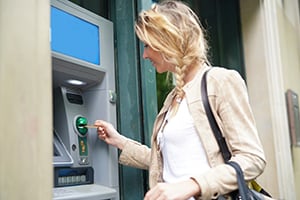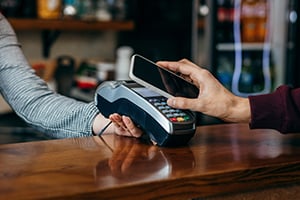Reviewed by: Meghan Wandrie
Rapid advances in technology have allowed us more ways than ever to pay for goods and services that we want – whether you prefer to pay in payment apps, or by tapping or swiping your cards, it’s important to be aware of potential threats to your financial security. One such threat is “skimming”, a form of fraud that targets unsuspecting bank customers.
 Skimming essentially means “to read quickly” and is a method used by criminals to capture sensitive information from payment cards, such as credit or debit cards. It involves the installation of illicit devices, often undetectable to the untrained eye, that are placed on ATMs, gas pumps or even handheld card readers in stores. These devices are designed to covertly collect data from the magnetic stripe or chip on your card, including the card number, expiration date and sometimes even your PIN.
Skimming essentially means “to read quickly” and is a method used by criminals to capture sensitive information from payment cards, such as credit or debit cards. It involves the installation of illicit devices, often undetectable to the untrained eye, that are placed on ATMs, gas pumps or even handheld card readers in stores. These devices are designed to covertly collect data from the magnetic stripe or chip on your card, including the card number, expiration date and sometimes even your PIN.
One point of distinction for skimming versus identity theft is that while the thought of thieves getting your card info to make purchases is alarming, they aren’t able to get information such as date of birth, social security or driver’s license number, so if you think you might have had that information stolen, you should contact local authorities and take steps to recover your identity.
Skimming devices can be installed in various ways, but some common methods include overlaying the legitimate card reader with a fake one, attaching a skimming device to the card slot or even using hidden cameras to capture PIN entry. When you insert your card into one of these compromised devices, the skimmer captures the card's information while the camera records your PIN as you enter it on the keypad.
1. Examine the Card Reader: Before using any ATM or card reader, take a moment to inspect it for any signs of tampering. Look for loose parts, mismatched colors or any additional attachments that seem out of place. If anything appears suspicious, report it to the relevant authorities or the establishment responsible for the device.
2. When Using a Fuel Pump: Choose a fuel pump that is closer to the store and in direct view of the attendant. These pumps are less likely to be targeted for skimmers. Run your debit card as a credit card. Consider paying inside with the attendant, not outside at the pump.
3. Use Secure and Trusted ATMs: Whenever possible, opt for ATMs located in well-lit, populated areas such as bank branches or shopping malls. These are less likely to be targeted by skimming criminals. Avoid using ATMs in remote or secluded locations or tourist areas, as they may present a higher risk.
4. When Using a Debit Card, Shield Your PIN: Many debit cards can be used as credit rather than using a PIN when making purchases. If your card has this option, try to select the option to use it as credit. If that’s not an option, at least shield the keypad with your hand or body to prevent hidden cameras or onlookers from capturing your PIN. Be vigilant of your surroundings and beware of anyone who seems overly interested in your transaction.
 5. Consider Contactless Payments: Contactless payment methods, such as mobile wallets, can provide an added layer of security. These methods use encrypted technology making it more difficult for skimmers to intercept your payment information.
5. Consider Contactless Payments: Contactless payment methods, such as mobile wallets, can provide an added layer of security. These methods use encrypted technology making it more difficult for skimmers to intercept your payment information.
6. Regularly Monitor Your Accounts: Keep a close eye on your bank statements and transaction history. If you notice any suspicious activity, such as unauthorized transactions or unfamiliar charges, contact your bank immediately. The sooner you report fraudulent activity, the quicker your bank can take action to protect your finances.
7. Update Your Cards: When your bank issues a new card with advanced security features, such as EMV chip technology, make sure to activate it promptly. Chip cards are harder to clone or skim compared to traditional magnetic stripe cards.
Skimming is an ever-present threat in the digital age, but by staying vigilant and adopting proactive measures, you can significantly reduce the risk of falling victim to this type of fraud. Remember to inspect card readers, use secure ATMs, shield your PIN, consider contactless payments, monitor your accounts regularly and update your cards. By following these guidelines, you can help safeguard your finances and enjoy peace of mind in your financial transactions.
Are you interested in contacting a local, Florida banker to discuss your individual financial needs? We’d love to speak with you. Schedule a consultation today.
Share: